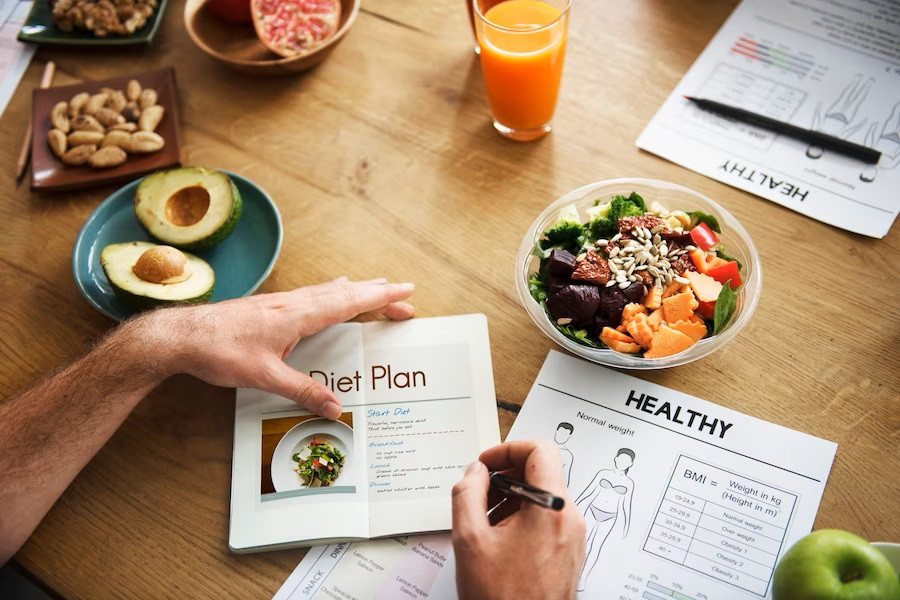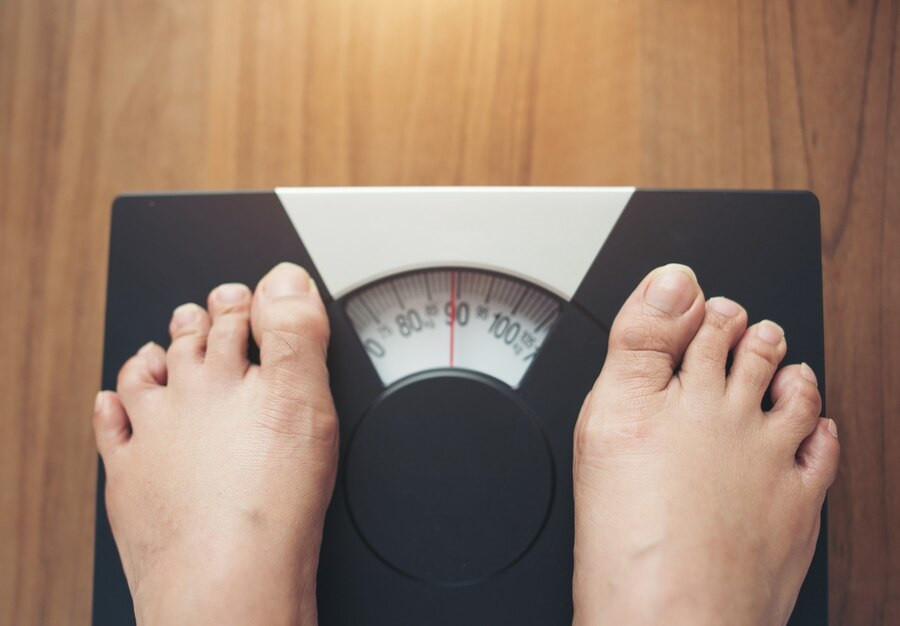Untuk menaikkan berat badan dengan cara yang sehat, sangat penting untuk fokus pada menu makan yang seimbang dan bergizi. Salah satu cara yang bisa dicoba adalah dengan mengikuti diet sehat 3.000 kalori. Seperti apakah proporsi menu makannya? Simak ulasannya berikut ini.
Apa itu Diet 3.000 Kalori?
Kebutuhan kalori umum untuk wanita dewasa adalah sekitar 1.600-2.400 kalori, dan pria dewasa sekitar 2.000-3.000 kalori. Namun, apabila Anda ingin menaikkan berat badan, Anda bisa menjalani diet 3.000 kalori.
Diet 3.000 kalori ini biasanya direkomendasikan untuk mereka yang memiliki indeks massa tubuh (BMI) di bawah normal, atlet yang sedang ingin meningkatkan performa, atau bodybuilder.
Konsumsi 3.000 kalori ini tidak bisa dilakukan sembarangan. Ada beberapa proporsi menu yang perlu diikuti, sehingga diet tetap sehat dan seimbang gizi.
Proporsi Menu untuk Menaikkan Berat Badan
Menurut Institute of Medicine of the National Academies, untuk mengikuti diet sehat 3.000 kalori, Anda perlu distribusi makronutrien yang tepat. Berikut adalah proporsi menu yang bisa diikuti:
- Karbohidrat (45-65% dari total kalori), yaitu sekitar 1.350-1.950 kalori
- Lemak (20-35% dari total kalori), yaitu sekitar 600-1.500 kalori
- Protein (10-35% dari total kalori), yaitu sekitar 300-1.050 kalori
Baca Juga: Pola Diet Rendah Serat, Apa Manfaatnya?
Contoh Distribusi Kalori untuk Diet 3.000 Kalori
Berikut adalah contoh rencana menu harian dengan distribusi kalori dari karbohidrat, lemak, dan protein.
Sarapan
Oatmeal dengan buah-buahan dan kacang-kacangan
- Karbohidrat: 70 gram (280 kalori)
- Protein: 10 gram (40 kalori)
- Lemak: 15 gram (135 kalori)
- Total: 455 kalori
Smoothie dengan yoghurt, pisang, dan madu
- Karbohidrat: 50 gram (200 kalori)
- Protein: 10 gram (40 kalori)
- Lemak: 5 gram (45 kalori)
- Total: 285 kalori
Camilan Pagi
Bar Protein dan buah segar
- Karbohidrat: 30 gram (120 kalori)
- Protein: 20 gram (80 kalori)
- Lemak: 10 gram (90 kalori)
- Total: 290 kalori
Makan Siang
Nasi merah dengan ayam panggang dan sayuran
- Karbohidrat: 90 gram (360 kalori)
- Protein: 35 gram (140 kalori)
- Lemak: 20 gram (180 kalori)
- Total: 680 kalori
Baca Juga: Jenis Kacang-Kacangan ini Baik untuk yang Sedang Diet
Camilan Sore
Yoghurt dengan granola dan buah kering
- Karbohidrat: 45 gram (180 kalori)
- Protein: 15 gram (60 kalori)
- Lemak: 10 gram (90 kalori)
- Total: 330 kalori
Makan Malam
Pasta dengan saus tomat dan daging sapi cincang
- Karbohidrat: 90 gram (360 kalori)
- Protein: 30 gram (120 kalori)
- Lemak: 20 gram (180 kalori)
- Total: 660 kalori
Salad dengan alpukat dan minyak zaitun
- Karbohidrat: 15 gram (60 kalori)
- Protein: 5 gram (20 kalori)
- Lemak: 15 gram (135 kalori)
- Total: 215 kalori
Camilan Malam
Keju dan biskuit gandum
- Karbohidrat: 30 gram (120 kalori)
- Protein: 10 gram (40 kalori)
- Lemak: 15 gram (135 kalori)
- Total: 295 kalori
Segelas susu sebelum tidur
- Karbohidrat: 12 gram (48 kalori)
- Protein: 8 gram (32 kalori)
- Lemak: 5 gram (45 kalori)
- Total: 125 kalori
Total Harian
- Karbohidrat: 432 gram (1.728 kalori)
- Protein: 143 gram (572 kalori)
- Lemak: 115 gram (1.035 kalori)
- Total: 3.335 kalori
Angka-angka di atas adalah contoh bagaimana mengatur asupan makronutrien untuk diet 3.000 kalori. Anda dapat menyesuaikan menu dan porsi sesuai dengan preferensi dan kebutuhan pribadi Anda. Selalu konsultasikan dengan kebutuhan kalori harian dengan dokter atau ahli gizi untuk memastikan diet yang sesuai dengan kondisi kesehatan Anda.
Memiliki pertanyaan seputar diet sehat? Anda bisa berkonsultasi dengan dokter kami melalui aplikasi Ai Care yang bisa diunduh di App Store atau Play Store.
Mau tahu informasi seputar nutrisi, makanan dan tips diet lainnya? Cek di sini, ya!
- dr Nadia Opmalina
NHS UK (2023). Healthy ways to gain weight. Available from: https://www.nhs.uk/live-well/healthy-weight/managing-your-weight/healthy-ways-to-gain-weight/
Gavin Van De Walle, MS, RD (2019). A 3,000-Calorie Diet: Benefits, Weight Gain, and Meal Plan. Available from: https://www.healthline.com/nutrition/3000-calorie-meal-plan
Health State MN US (2022). Weight Gain Tips. Available from: https://www.health.state.mn.us/docs/people/wic/nutrition/english/genweightgain.pdf
Rudy Mawer, MSc, CISSN (2023). The 18 Best Healthful Foods to Gain Weight Fast. Available from: https://www.healthline.com/nutrition/18-foods-to-gain-weight












